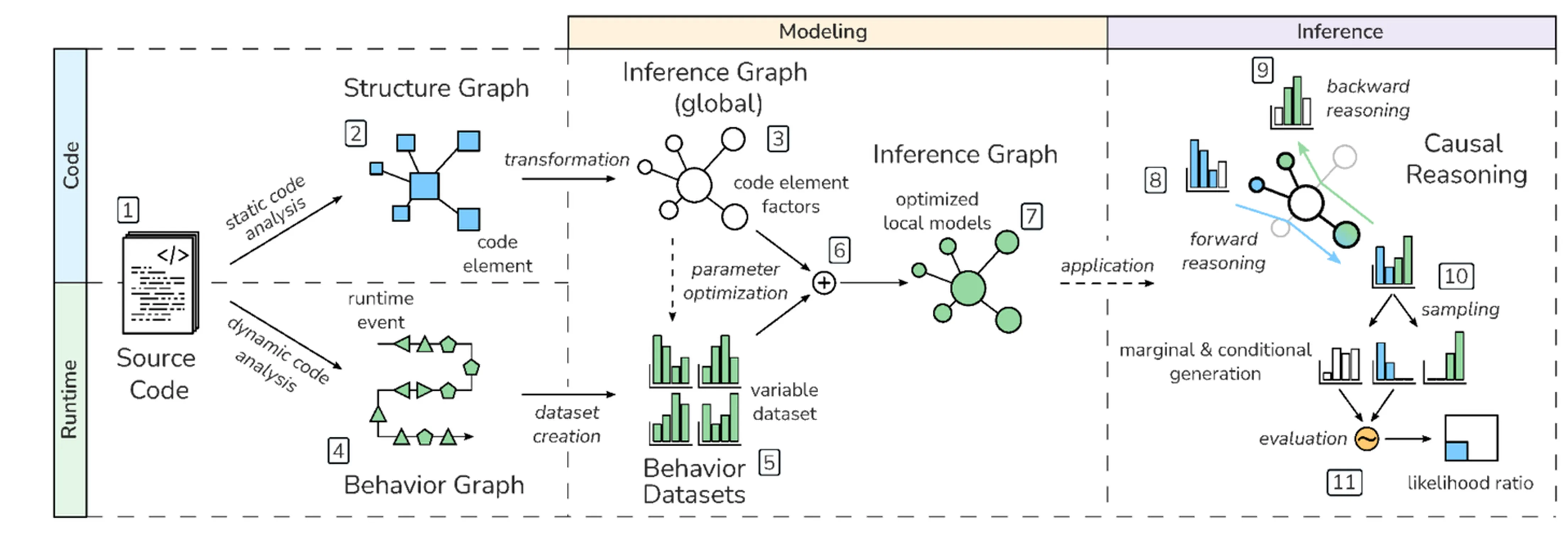Probabilistic Software Modeling: A New Paradigm for Software Analysis
Software development involves navigating complex and often unpredictable behaviors. Traditional methods for understanding software structure and behavior rely on static analysis and testing, which may fail to capture hidden relationships and runtime uncertainties. Probabilistic Software Modeling (PSM) introduces a novel paradigm that transforms programs into probabilistic models, enabling enhanced fault detection, semantic code analysis, and predictive insights. This blog explores the core concepts behind PSM and its potential impact on software engineering.
The Challenge of Software Complexity
Software systems are growing increasingly complex, often leading to unintended behaviors. These complexities arise due to factors such as distributed computing, parallel processing, and evolving system dependencies. Traditional methods of software verification—such as unit testing and debugging—are effective but struggle to scale for large and dynamic systems.
Probabilistic Software Modeling (PSM) provides an alternative by transforming software into a probabilistic representation, allowing for a deeper, mathematical understanding of how software behaves under various conditions.
What is Probabilistic Software Modeling?
PSM constructs a probabilistic representation of a software system by extracting both its structure and runtime behavior. This model serves as a digital twin, enabling:
- Simulation of execution paths to analyze possible program behaviors.
- Probabilistic quantification of software states, which helps in detecting anomalies.
- Enhanced comprehension of code logic and dependencies.
At its core, PSM builds a Behavior Graph, which captures execution traces, and a Structure Graph, which represents the software’s architecture. These graphs form the foundation of an Inference Graph, which encodes probabilistic dependencies between different software components.

Applications of PSM
PSM opens the door to numerous applications that extend beyond traditional software analysis:
-
Semantic Code Clone Detection Traditional code clone detectors rely on syntactic matching. PSM, however, enables semantic clone detection by analyzing behavioral similarities, identifying functionally equivalent but syntactically different code blocks.
-
Fault Localization By modeling software as a probabilistic system, PSM allows developers to pinpoint errors by identifying execution traces that diverge from expected behavior. This significantly improves debugging efficiency.
-
Anomaly Detection Comparing a software system’s live behavior against its PSM model helps detect deviations, making it useful for security monitoring, performance analysis, and system reliability assessments.
-
Test Case Generation PSM can automatically generate test cases by simulating rare and edge-case behaviors, improving test coverage without manual intervention.
Machine Learning and PSM
PSM integrates well with Bayesian inference, factor graphs, and neural networks to improve software analysis. By leveraging Non-Volume Preserving Transformations (NVPs), PSM effectively models distributions of runtime variables, enabling:
- Probabilistic inference to predict how changes in one part of the system affect the rest.
- Likelihood evaluation to assess whether an observed execution trace aligns with expected behavior.
Conclusion: The Future of Software Analysis
Probabilistic Software Modeling represents a paradigm shift in software engineering, moving beyond deterministic analysis toward probabilistic reasoning. By applying PSM, developers and researchers can gain deeper insights into software behavior, improve fault detection, and enhance automation in software maintenance.
As software systems continue to grow in complexity, embracing probabilistic methods will be crucial for ensuring reliability, security, and maintainability. Whether used for code clone detection, anomaly detection, or automated testing, PSM is poised to transform the way we analyze and interact with software systems.
References and images available in the original research paper.